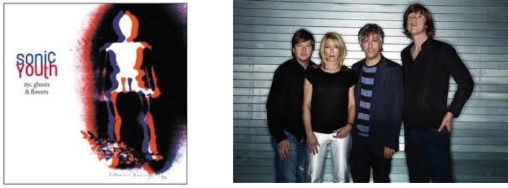In terms of metaphysical philosophy, that is, the human preoccupation with making sense of life, death, and the universe that holds its effects, one issue amazes to no end. While the modern philosophers were exceptionally skilled in formulating theories that explain metaphysics by the process of reason, the brilliant rationalist and empiricist philosophers such as Rene Descartes, Baruch Spinoza, Gottfried Leibniz, John Locke, George Berkeley, David Hume and Immanuel Kant, with all their prowess in deducing facts in terms that explain the paradox of human existence through processes of highly organized thought, succeed to alienate the critical quality of emotional experience, arguably the most primeval force moving humans to obsess over the meaning of life through metaphysics, mathematics, religion, industry, technology, art, music, duty, morality, justice, free will, right, wrong, good, bad, all the objective and subjective intrinsically contradictorily connected qualities that define the human experience and its relation to the universe.
Whether it is for cultural reasons, which at the time of the modern philosophers, mostly regarded emotionality as a sort of sentimental quality that no dignified man would succumb to or the undesirable opponent to the idealized polar value of emotional control that marks civility, reinforces stigma against emotional sensitivity, associates emotional expression outside the realms of the arts and entertainment mostly as unwelcome, inappropriate, or an indication of immaturity and/or lack of self-control and continues to exist today, the result, in essence, is that philosophers concerned with the questions of metaphysics manage to occlude a fundamental quality of humanity: emotion. In fact, were it considered it seems that, emotion may be found to be the missing link; the innate characteristic modern philosophers are wont to contemplate yet can never seem to explain, the ultimate force that connects the human mind to the material and immaterial world so profoundly that it may overwhelm the faculties of rationalist and empirical design.
Consider this. As a collective society, science has come to be the most persuasive means to explain, that which lacks understanding. Therefore, without observable evidence, science has mostly abandoned the idea of innate knowledge outside the rooting function often discussed in the context of infants and developmental psychology. This is unfortunate since there is, in fact, quite convincing evidence for innate knowledge. According to the dictionary, emotion is a, “mental state that arises spontaneously rather than through conscious effort and is often accompanied by physiological changes.” (“Emotion,” 2009) Therefore, is not emotion a sort of innate knowledge?
Emotionally influenced behavior is something humans know and begin to engage in from the moment of birth. Infants do not cry because they know that crying is an action that will necessarily lead them to the security and/or nourishment that the cold sensation of brisk air upon exposed skin and the growling impatience of a hungry stomach indicate to a more mature and aware mind that the body must seek fulfillment to thrive In many ways, crying with its communicative quality of emotion, is like a language that forcefully and fluently speaks with or without awareness of an educated mind. Babies speak through crying and parents understand the sound of the behavior, the vocalization, as a signal of distress. No teaching, no learning encourages this to happen, it simply is.
Furthermore, the vocalization that occurs with crying, although lacking the sophistication and diversity that comes with learning and cultural identity, nonetheless effectively communicates a message of distress that is clear if not more so than that of the learned more worldly child who is cold, hungry and in a distinctly inflected and refined but emotionally neutral voice tells his mother or father that he is cold, needs a warm jacket, is hungry and needs something to eat. This is not to say that emotion is an innate quality of intelligence in and of itself. However, it may be true that one may come to increase intelligence by embracing the elevated sense of awareness emotion produces in body and mind; perhaps, one may even come to realize a sense of connectedness to the universe or have a spiritual revelation.
Therefore, if emotions are, in fact, a means to communicate (and science agrees that they are) and this ability to communicate is with every person at the time of birth, then does that not mean emotion is a form of innate knowledge? Moreover, if it is true that emotions are a sort of innate quality preceding the educated mind capable of facilitating communication despite the obstacles of culture, education, gender, ethnicity, age, and religious beliefs, so that humans can come to understand each other and gather in communion to ponder the external influences of the physically perceived world and the immaterial wonder of the infinite cosmos, would not the question of emotional experience be at least of some importance to the cause of metaphysics?
Equally, emotion marries the division between rationalism and empiricism that creates the prophet with his rationalist foundations that furnish him with inconceivable knowledge of future events and the physicist with all her educated and devout faith in the ability of mathematical equations and empirical principles to answer all the metaphysical questions that plague the philosophizing mind.
To illustrate the weight and breadth of impact emotion impresses upon the mind and the body, contemplate the condition of a state of panic. The mind and body may interpret thoughts so that combined with the experience of emotion produces a state similar to that had the person panicking been running, full speed, through a hot and humid tropical jungle, producing a hot, sweaty sensation, increased heart rate, breathlessness even though the person may be standing motionless out of doors on a cold, snowy January night.
The senses, the environment, despite the emphatic importance placed upon them by modern philosophers can seem less extraordinary when one considers the power affect has upon the body and mind. This emotional condition of panic, defined by its intense combination of anxiety and fear demonstrates quite simply how the human experience of emotion can come to outweigh the influences of both reason and indefinable externally caused sensations. Furthermore, it may be this very omnipresent, unavoidable, and continuously evolving interplay of trickery and revelation transacted by emotional experience that drives metaphysics in the past to today, continuing to compel philosophers who listlessly pursue their rational explanations of higher power and a riposte that will satisfy the desperately human need to understand, to make sense of the meaning of life with all of its idyllic love and desolate suffering. There must be a reason, an explanation, a purpose that explains human existence, right?
It is an egregious offense, to alienate emotion, divide modern philosophy, perpetuate stigma against emotional sensitivity, and devalue sincere emotional expression today. Therefore, the wise do not dismiss emotion; for all its unpredictable volatility, what would life be without emotions, with no fear, love, grief, happiness, and sadness? Is not the overwhelming influence of emotion what drives us to sensory ecstasy, abstract excellence, psychology and other scientific pursuits? It may be true that the body and mind are amazing effects to behold; and so too is the power of emotion.
References
Emotion [Def. 1]. (2009). In The Free Dictionary. Retrieved May 24, 2013, from http://www.thefreedictionary.com/emotion













